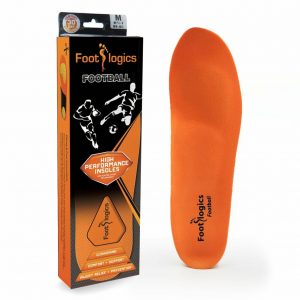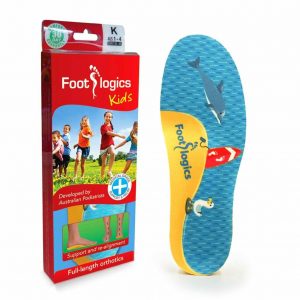Ball of Foot Pain or Metatarsalgia
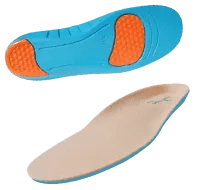
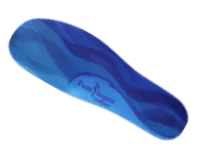
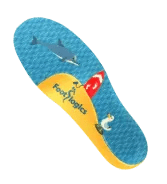
Orthotic insoles for Ball of Foot Pain (Metatarsalgia)
Metatarsalgia inserts for Ball of Foot Pain
“Metatarsalgia” is a burning pain felt mostly under the ball of the foot. Women who wear high heels and fashion shoes often complain of pain under the balls of their feet. However, this type of foot pain is also common in men and it can also occur in normal, flat shoes. Generally speaking, pain in the ball of your foot can be broken down into two categories:
- Ball of foot pain in women’s fashion shoes (medium to high heel)
- Ball of foot pain in normal, flat (mens/womens) shoes
Metatarsalgia is a common foot ailment caused by the collapsing of the foot’s “transverse arch”. The five metatarsal bones work together to form an arch that spans the forefoot. These bones resemble the fingers in your hand.
The transverse arch will drop significantly with age, being overweight, having weak muscles, or wearing tight-fitting, high-heeled shoes, which will then put pressure on the ball of the foot. At Footlogics, our team of experts has created a variety of metatarsalgia orthotics and footwear to alleviate foot pain in the ball of the foot.
Metatarsalgia inserts for Ball of Foot Pain
“Metatarsalgia” is a burning pain felt mostly under the ball of the foot. Women who wear high heels and fashion shoes often complain of pain under the balls of their feet. However, this type of foot pain is also common in men and it can also occur in normal, flat shoes. Generally speaking, pain in the ball of your foot can be broken down into two categories:
- Ball of foot pain in women’s fashion shoes (medium to high heel)
- Ball of foot pain in normal, flat (mens/womens) shoes
Metatarsalgia is a common foot ailment caused by the collapsing of the foot’s “transverse arch”. The five metatarsal bones work together to form an arch that spans the forefoot. These bones resemble the fingers in your hand.
The transverse arch will drop significantly with age, being overweight, having weak muscles, or wearing tight-fitting, high-heeled shoes, which will then put pressure on the ball of the foot.
At Footlogics, our team of experts has created a variety of metatarsalgia orthotics and footwear to alleviate foot pain in the ball of the foot.

Metatarsalgia symptoms
Symptoms may be mild to start with, increasing when the person stands for a long time, walks in high heels, or does any physical activity. Typically they comprise:
- a burning sensation under the balls of the feet
- intensified pain after standing, walking or running
- the pain will subside after resting
- a feeling of a ‘pebble’ being present in the shoe
- walking barefoot is can be very painful
When these symptoms arise, it’s important not to ignore them. Metatarsalgia when left untreated could lead to more severe conditions like Morton’s Neuroma. Another typical symptom of Metatarsalgia/ball of foot pain is a thick build-up of callus under the ball of the foot. It’s a tell-tale sign of the excess pressure applied on the forefoot on a daily basis.
Ball of Foot Pain in women’s fashion shoes
Ball of foot pain, or Metatarsalgia is often experienced by women who wear fashion shoes that have a medium to high heel and/or are very tight. People suffering from Metatarsalgia describe their pain as a burning sensation that is at its worst when the feet are in tight fashion shoes or high heels for extended periods of time. It is typically accompanied by the formation of excess callouses on the ball of the foot.
Pain is felt when the forefoot bones (metatarsals) drop and surrounding ligaments weaken, which causes the entire structure of your forefoot to collapse. This increases the friction and pressure placed on the ball of your foot. When you wear heels, your forefoot area is forced to absorb 70-80% of your body weight, elevating the occurrence of pain.
If you’re like most women, you don’t want to give up wearing your high heels and fashion shoes – but you do want relief from pain. Footlogics Catwalk insoles are the perfect solution. Simply insert them in your shoes and feel them support your arch and metatarsal bones, restoring biomechanical balance to your foot.
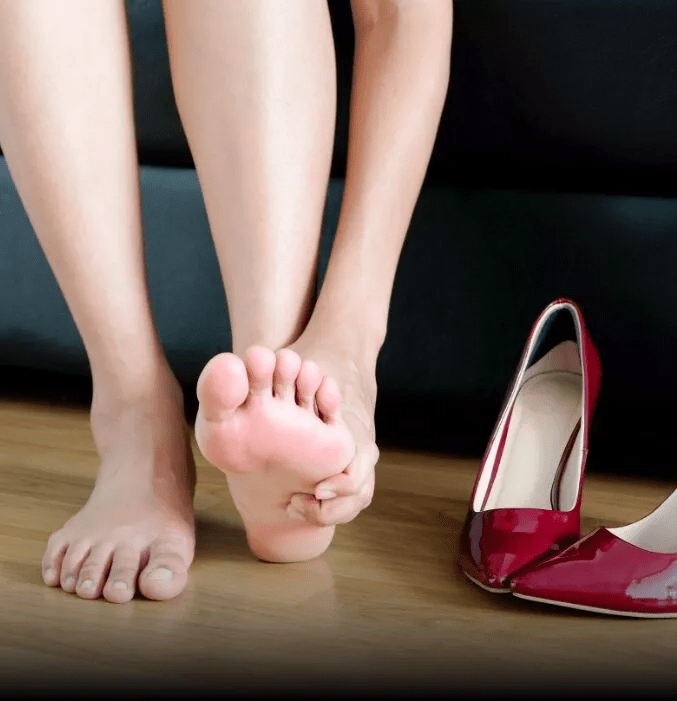
Ball of Foot Pain in Normal, Flat Shoes
Even in flat shoes, both men and women can experience Metatarsalgia. The burning pain is sometimes present in the area surrounding the second, third or fourth toes and worsens when you stand, walk or run. The more you rest, the less the pain. Some people have described ball of foot pain as the feeling of walking with a pebble in your shoe, which usually makes walking in bare feet far too painful.
Causes of Ball of Foot Pain in Normal Shoes
The most common causes of pain in the ball of the foot are:
- an increase in physical activity or sports (i.e. running)
- standing or walking for long periods of time in hard shoes or boots (this is often the reason for ball of foot pain in people employed with the police, military, security, farming, teaching and trades industries)
- over-pronation or excessive pronation (collapsing of the arch and rolling of the ankles)
Biomechanical research has shown that this last cause is actually the most common.
Over-pronation and Metatarsalgia
Our feet have 26 bones that are held together with an intricate web of muscles and ligaments. The middle of the foot is held up off the ground by two arches: the Longitudinal Arch or instep, which runs along the foot from your heel to your toes, and the Transverse Arch, that runs across the foot from left to right. 5 metatarsal bones run from the middle of the foot to the toe joints. Over-pronation is when the longitudinal arch collapses and the ankle rolls inwards every time the foot lands on the ground. Excess pressure is placed on the metatarsals causing the Transverse Arch to collapse, which is a common side effect of over-pronation. The structure of the forefoot is weakened and the metatarsal joints become inflamed, causing pain. Wearing hard, flat shoes or walking on hard surfaces such as tiled floors, pavement and concrete will exacerbate this condition.
Body weight & its role in Metatarsal foot Pain
Your feet experience increased pressure if you are overweight.
Your feet are built to support your average body weight.
Overweight people put a lot of strain on their feet’s muscles, joints, and ligaments; in particular, the metatarsal bones will suffer and collapse, resulting in discomfort in the ball of the foot.
There are popular and successful treatments and solutions available for the possible reasons of metatarsal foot pain mentioned above.
At Footlogics, we have more than 15 years of experience treating both children’s and adults’ foot pain. We provide a comprehensive selection of quality metatarsalgia insoles and orthotics to help users run or walk without pain.
Treatment with Metatarsal support orthotics
Footlogics offers a range of orthotics with built-in metatarsal support to help relieve pain in the ball of your feet. Depending on the type of footwear and/or activity we have a shoe insert to meet your needs.
Footlogics 'Metatarsalgia' Insoles
These 3/4 length orthotics have a built-in metatarsal pad to lift the metatarsal bones and support the transverse arch. This will greatly reduce the pressure on the ball of the foot and provide long-term relief. The 3/4 length means it can fit into slip-on shoes and shoes with less room in the forefoot.
Our metatarsalgia insoles provide maximum support and comfort and are designed to last, meaning they will keep working to keep your feet happy and healthy.
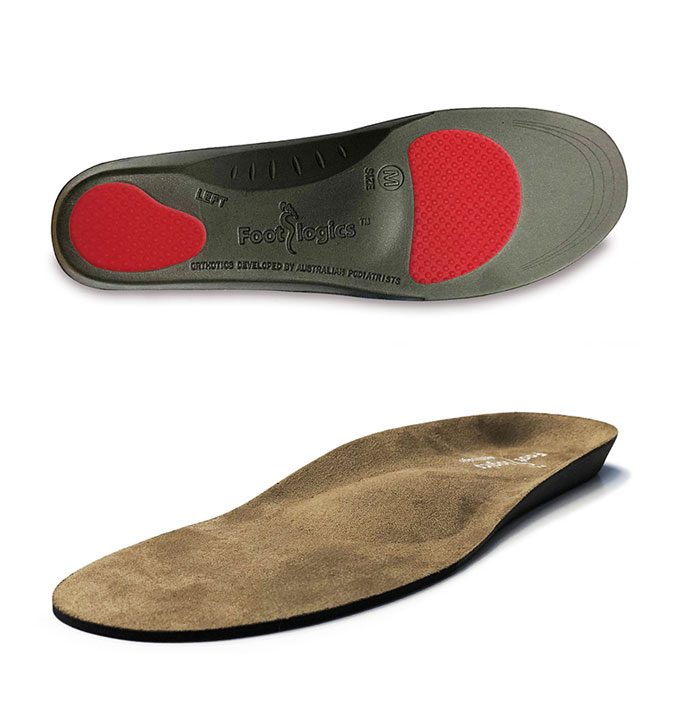
Footlogics 'Meta Full-length' orthotics
The Full-length Meta is very similar to our Metatarsalgia insole. It also features a metatarsal raise to lift the transverse arch. The only difference is that this is a full-length orthotic, making it more suitable for joggers, lace-up shoes, work boots etc.
Footlogics 'Versa' Insoles
This orthotic is developed by podiatrists to fit perfectly into narrow women’s fashion shoes with a flat, low or medium heel height. These insoles work by restoring the biomechanical balance within and supporting both the longitudinal and transverse arches of the foot. This way your weight is more evenly distributed on your joints. A reduction in excessive pressure reduces the overall friction in the ball of your foot.
Best insoles for ball of foot pain
Each person has distinct needs when it comes to selecting the best insoles to treat metatarsalgia. Because of this, Footlogics offers a wide selection of insoles to enable consumers to choose the ideal solution for their unique pain management requirements.
You may get the care you require with a single click.
Metatarsal Shoe Inserts
Users can support the ball of their feet properly and prevent unneeded and potentially harmful wear and strain on the metatarsal bones by wearing the appropriate metatarsal shoe insert.
These inserts fit into any shoe with ease, allowing the user to carry on with their daily activities as usual.
Footlogics 'Sports' orthotics
This orthotic features a mild metatarsal raise (lower compared to the above three models) and is recommended for sports and running shoes. Also tennis or golf shoes. The gel pad under the forefoot provides excellent cushioning and shock-absorption.
Other treatment options for Metatarsal foot pain
- rest, minimize walking and standing wherever possible
wear high quality, supportive footwear
- apply ice to the affected area 2-3 times a day for 5-10 minutes
- Remove callouses from the balls of your feet with a pumice stone or visit a chiropodist for professional removal
Metatarsalgia: how orthotics can help..
Metatarsalgia is condition that affects the metatarsal bones. It involves inflammation, pain, swelling, stress fractures, and even nerve thickening. This condition usually affects the second and third metatarsals. Symptoms may be mild to start with, increasing when the person stands for a long time, walks in high heels, or does any physical activity. The main cause of the symptoms is excess pressure placed on the forefoot.
People who are very active and walk long distances are more susceptible to this condition, as well as the use of (medium or high) heels can also trigger pain in the region, as it throws the body weight forward and increases the load and pressure on the metatarsals. Over time, Metatarsalgia may come more severe and lead to ” Morton’s neuroma”. This is the thickening of the interdigital nerve that passes through the metatarsals. The development of neuropathy can worsen the symptoms. It becomes common to lose feeling in the toes and to feel shock when stepping on the toes.
Orthotics provide more contact area between the foot and the shoe, and better redistribute the load that is deposited in the region. The implementation of a pad, a small elevation in the metatarsal region, improves the positioning of these bones during stepping, reducing the pressure that reaches this point of support. Thus, it is possible to stabilize the local structures and avoid compression of the tissues near the toes.
PREVENTION AND TREATMENT
– movement correction
Incorrect movements during walking or physical activity can increase the pressure on the metatarsals, causing local inflammation. These injuries are common in sports, especially in running, because athletes wear out the tips of their feet a lot, both to receive the load and to propel the body. The ideal is the rolling of the foot, with the weight being received at the heel and then distributed to the rest of the structure, avoiding accumulation of pressure on the metatarsals – unless the race is for speed and short distance.
– elevation in the metatarsal region
To improve the positioning of the metatarsals, some supports can be positioned below the metatarsals. This elevation prevents the local structures from being compressed, and can be manufactured using silicone or more rigid materials. However, those who use this support often complain that it is difficult to move their feet while walking or playing sports. In this case, insoles with elevation avoid any kind of discomfort and allow the metatarsals to fit better in the shoe.
Footlogics insoles provide greater contact area between the foot and the shoe, and better redistribute the load that is deposited in the region. The implementation of a pilot, a small elevation in the metatarsal region, improves the positioning of these bones during stepping, reducing the pressure that reaches this point of support. Thus, it is possible to stabilize the local structures and avoid compression of the tissues near the toes.
– weight reduction
Because they bear all the weight of the body, the feet are overloaded when there is excess body mass. Overweight should be avoided, in order to reduce the pressure that reaches the lower limbs.
-mobilization of the metatarsals
Massaging the metatarsal region helps to relieve tension in the muscles and improve the positioning of the structures in the front part of the feet. The ideal is that the relaxation is done with the hands, so that the stimuli are well localized. But it is also possible to use tennis balls during the day, or a frozen bottle of water at times when the pain is more intense.
Contact the Footlogics team today to learn more about how our available metatarsalgia insoles and metatarsal orthotics can help to alleviate the causes of metatarsalgia foot pain. We’ll be happy to answer any questions you have in relation to your foot condition or the choice of orthotics that meets your needs.

